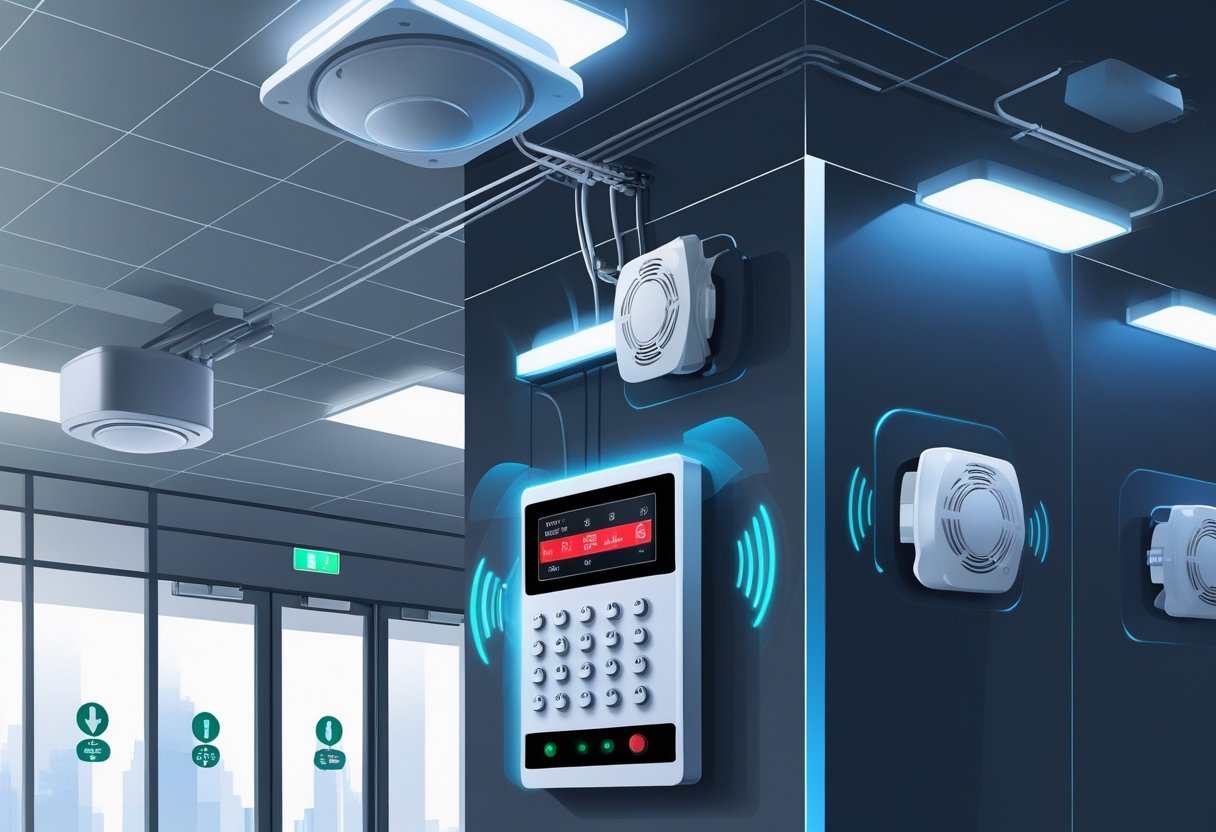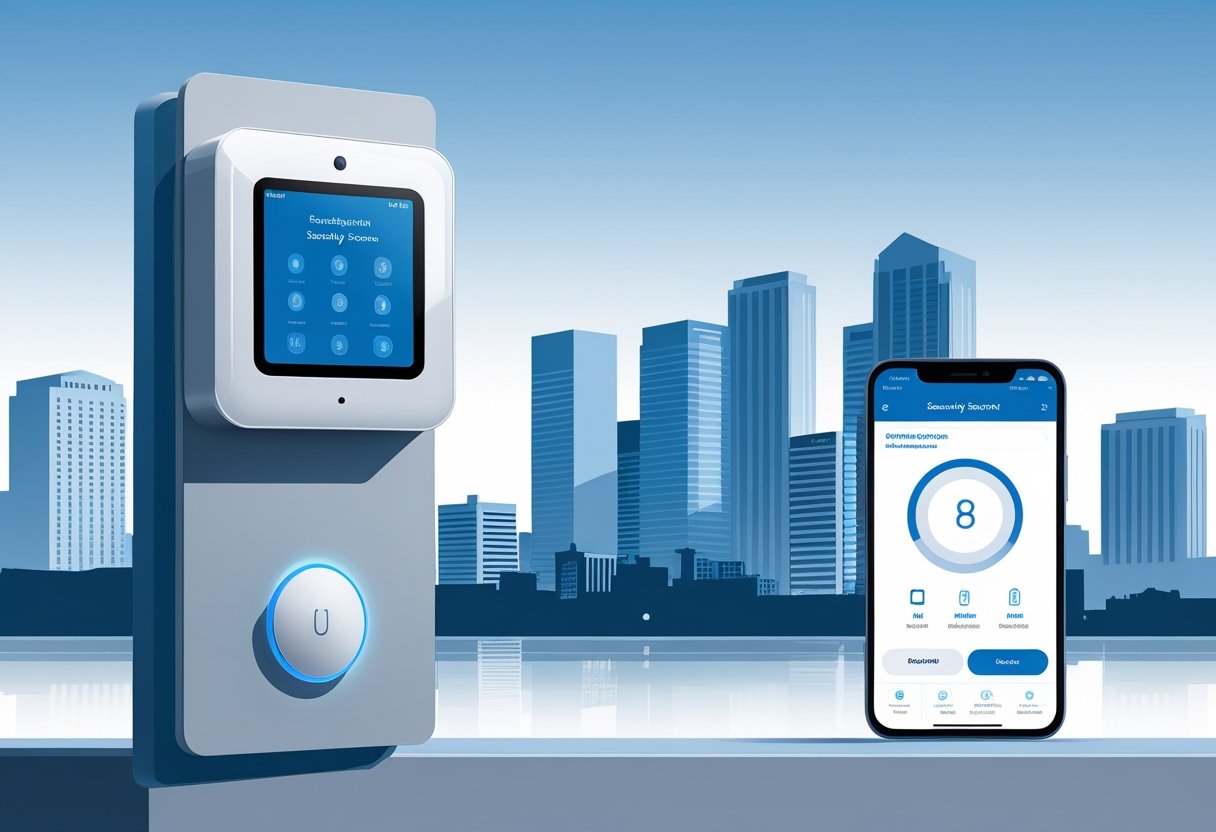A reliable fire alarm system is crucial for safeguarding lives in any building, but incorporating a voice evacuation feature can significantly enhance its effectiveness. A fire alarm system with voice evacuation provides clear, spoken instructions to occupants during emergencies, helping them respond calmly and efficiently. This clear communication can be vital in high-stress situations, making sure everyone knows the safest exit routes.
In the greater Houston area, businesses and facilities can greatly benefit from advanced voice evacuation systems. These systems go beyond traditional alarm sounds, offering live or recorded announcements that guide individuals, reducing confusion and panic during critical moments. The flexibility of a voice evacuation system allows for tailored messaging based on the specific emergency, whether it's a fire, gas leak, or other urgent situations.
By choosing a fire alarm system with voice evacuation, you invest in the safety and well-being of everyone in your building. It ensures that clear, actionable information is always available when it's needed most, making it an essential aspect of modern life safety planning.
Understanding Fire Alarm Systems with Voice Evacuation
Fire alarm systems equipped with voice evacuation capabilities enhance safety and communication during emergencies. They provide clear instructions and alerts, guiding occupants effectively. This section explores the definition, key features, and important comparisons to traditional fire alarm systems.
What Is a Fire Alarm Voice Evacuation System?
A fire alarm voice evacuation system is designed to deliver critical information during emergencies. It uses recorded messages delivered through speakers to inform and direct building occupants.
These systems often feature amplifiers and voice evacuation panels that play pre-programmed messages. When activated, you will hear clear instructions about evacuation routes and safety procedures.
Voice evacuation systems are crucial in large or complex buildings, where conventional alarms may not efficiently communicate with all occupants. This system ensures that everyone receives the same information simultaneously, enhancing overall safety.
Key Features of Modern Voice Evacuation Systems
Modern voice evacuation systems incorporate several key features that distinguish them from traditional alarms:
- Clear Voice Messaging: Provides understandable instructions instead of just alarms.
- Programmable Alerts: Allows customization for specific building needs.
- Live Traffic: Emergency personnel can make live announcements via a microphone.
- Integration Ability: Works seamlessly with existing fire alarm systems and other safety equipment.
These features emphasize the system's focus on effective communication. High-quality speakers ensure messages are discernible in various environments, which is vital in high-traffic buildings.
Comparison to Traditional Fire Alarm Systems
Traditional fire alarm systems primarily rely on sound, such as horns and bells, which signal a fire event. While effective in alerting occupants, these systems lack the ability to provide detailed instructions.
In contrast, voice evacuation systems enhance this process significantly. They do not just alarm; they inform. For example, in a fire emergency, you will receive specific instructions directing you to safe exits rather than just a general alarm.
This difference can be life-saving. In crowded spaces, clear directions help with efficient evacuations and reduce confusion. Understanding these distinctions highlights the value of voice evacuation systems in modern safety planning, particularly for businesses in the Greater Houston area.
How Voice Evacuation Systems Work
Voice evacuation systems are integral to modern fire alarm systems, providing clear communication during emergencies. They deliver vital information quickly and efficiently, ensuring that occupants understand how to respond appropriately.
Emergency Communication Workflow
In emergency situations, the workflow of voice evacuation systems begins with detection, usually triggered by smoke or heat sensors. Once an incident is detected, the fire alarm control panel immediately activates the voice evacuation system.
The system broadcasts pre-recorded messages or live announcements to guide occupants. This real-time communication reduces confusion and enhances safety by giving clear, concise instructions on evacuation routes and safety protocols.
Occupants hear messages through strategically placed speakers, which are designed to ensure clarity and volume across various environments. This workflow significantly improves emergency response times and occupant safety.
Message Types: Live and Pre-Recorded
Voice evacuation systems utilize two primary types of messages: live announcements and pre-recorded messages. Pre-recorded messages are designed for common emergencies, allowing for swift communication. These messages contain essential information, such as evacuation routes or instructions to stay put if safe.
Live announcements allow emergency personnel to convey real-time updates and specific instructions during an incident. This flexibility is crucial, as responders can adapt messages to the unfolding situation based on the building's layout and occupant needs.
Having both message types ensures that all scenarios can be addressed effectively, making the voice evacuation system an essential tool in your emergency communication strategy.
Integration with Fire Alarm Control Panels
Integration with fire alarm control panels is a key feature of voice evacuation systems. These systems work in tandem to create a cohesive emergency communication framework.
The fire alarm control panel not only detects emergencies but also sends signals to activate the voice evacuation system. This ensures that notifications are timely and simultaneously effective across the facility.
Additionally, integration allows for status monitoring and fault detection, ensuring your voice evacuation system is operational. In the greater Houston area, it’s vital that businesses have this integrated system in place to uphold safety standards and enhance their emergency preparedness infrastructure.
Benefits of Fire Alarm Systems with Voice Evacuation
Fire alarm systems with voice evacuation offer significant advantages that enhance safety and ensure effective communication during emergencies. These systems provide clear instructions and guidance that can help mitigate risks and improve overall safety for building occupants.
Improved Safety and Clarity in Emergencies
A fire alarm voice evacuation system provides personalized, pre-recorded messages that deliver vital information during emergencies. This clarity is crucial as occupants often face confusion and chaos in high-stress situations.
Pre-recorded messages can instruct individuals on safe exit routes, directing them away from danger. Additionally, these systems can be tailored to specific building layouts, ensuring instructions are relevant and effective.
This level of communication is superior to traditional alarm systems, which typically rely on loud sirens that do not convey meaningful information. Consequently, occupants receive timely and actionable guidance, reducing the likelihood of accidents and improving evacuation efficiency.
Reducing Panic and Ensuring Accessibility
In emergencies, panic can lead to disastrous outcomes. Voice evacuation systems play a vital role in reducing this panic by offering calm and authoritative instructions. The use of a human voice, rather than a mechanical alarm, has been shown to comfort individuals and foster a sense of control.
These systems also promote accessibility for occupants with disabilities. Clear audio messages ensure that everyone, including those with hearing impairments when combined with visual cues, can understand evacuation instructions. Implementing these measures can significantly enhance safety for all building occupants, addressing various needs.
Providing information in multiple languages can further cater to diverse populations, ensuring no one is left uninformed during an emergency.
Regulatory Compliance and Legal Requirements
Utilizing a voice evacuation system can also help you comply with local fire safety regulations prevalent in the greater Houston area. Many building codes now mandate enhanced notification systems, especially in public or high-occupancy spaces.
The ability to communicate directly with occupants is often part of these regulations, highlighting the importance of effective evacuation protocols. Voice evacuation systems can help you meet these requirements, reducing potential liabilities.
By investing in a voice evacuation system, you not only improve safety but also align your property with legislative expectations, protecting your interests and those of your occupants.
Design and Installation Considerations
When designing and installing a fire alarm system with a voice evacuation feature, you must carefully evaluate various factors. This includes understanding your building's specific needs, ensuring the system can scale, and selecting the appropriate components.
Assessing Building Needs and Occupancy
Begin by evaluating the unique characteristics of your building. Consider factors such as occupancy type, layout, and the number of occupants. Different facilities, such as schools, hospitals, or office buildings, have distinct requirements.
Your assessment should address:
- Occupant Behavior: Understand how occupants may react during an emergency.
- Egress Routes: Analyze the effectiveness of evacuation paths.
- Sound Propagation: Ensure the voice evacuation system delivers clear messages throughout.
Incorporating these elements will help you tailor the system to enhance safety and ensure effective communication.
Scalability and Customization Options
Your fire alarm system should be adaptable to changes in building use or occupancy levels over time. Scalability is essential for future-proofing your investment.
Consider these key aspects when planning:
- Modular Components: Choose systems that allow for easy expansion or modification.
- Integration Capabilities: Ensure compatibility with existing fire detection systems.
- Custom Messages: Tailor voice messages to fit the specific needs of different scenarios.
A customizable approach will ensure your system remains relevant and effective as circumstances evolve.
Selecting the Right System and Components
Choosing suitable components is critical for the effectiveness of your fire alarm voice evacuation system. Investigate various systems available in the Houston area that meet national and local standards.
Focus on:
- Reputable Brands: Select established manufacturers known for reliability.
- Feature Set: Look for systems that offer intelligibility, range, and user-friendly interfaces.
- Installation Expertise: Work with professional installers who specialize in fire alarm systems to ensure correct setup.
Consideration of these elements will aid in achieving an efficient and compliant fire alarm system tailored to your specific needs.
Maintenance, Testing, and Upgrades
Regular maintenance and testing of your fire alarm system with voice evacuation capabilities are essential for safety and compliance. Proper upkeep ensures that the system functions correctly during emergencies, providing clear evacuation instructions to occupants. Upgrading components further enhances reliability and efficiency.
Routine System Testing
Routine testing is critical for your fire alarm system. This involves verifying that each device, including smoke detectors and voice evacuation components, is operational. You should conduct tests at least twice a year.
Key elements of testing include:
- Checking the sound of alarms and voice messages.
- Verifying connections and communication between devices.
- Inspecting the functionality of notification systems.
You should document each test thoroughly. Keeping a log not only meets legal requirements but also helps identify trends in performance issues.
Upgrading Existing Fire Alarm Systems
Upgrading your fire alarm system enhances safety and provides better functionality. Consider incorporating advanced technology, such as addressable fire alarms or modern voice evacuation systems.
Benefits of upgrades include:
- Improved detection accuracy and reduced false alarms.
- Enhanced clarity of voice messages in emergency situations.
- Integration with other safety systems.
If your system is older than ten years or lacks current features, consult a professional to evaluate upgrade options tailored to your needs in the greater Houston area.
Troubleshooting and Professional Support
Troubleshooting any issues with your fire alarm system should be a priority. Common problems may arise from faulty connections, device malfunctions, or software issues.
Effective troubleshooting steps involve:
- Identifying error codes on control panels.
- Checking power sources and backup systems.
- Ensuring all devices are correctly installed and configured.
Engaging professional support is crucial. Certified technicians can perform in-depth diagnostics, ensuring your system remains compliant and operational. Regular inspections by experts in the greater Houston area establish trust in your fire alarm system's reliability during emergencies.
Frequently Asked Questions
Voice evacuation systems are essential for enhancing the safety of building occupants during emergencies. Understanding their requirements and functionality can help you make informed decisions regarding your fire alarm systems.
What are the requirements for a fire alarm system to include voice evacuation capabilities?
To incorporate voice evacuation, a fire alarm system must meet specific NFPA standards, including NFPA 72 and applicable local codes. It should have a reliable means of delivering clear audio messages to address occupants effectively during an emergency situation.
How does NFPA 72 regulate voice evacuation systems within fire alarms?
NFPA 72 provides guidelines for installation, performance, and maintenance of fire alarm systems, including voice evacuation. This standard ensures that the systems are effective in communicating essential information, such as evacuation routes and safety instructions, thereby minimizing confusion during emergencies.
In what situations is the implementation of voice evacuation mandatory?
Voice evacuation systems are typically required in high occupancy buildings, such as hotels, schools, and hospitals, where traditional alarm systems may not suffice. Local regulations may also dictate their necessity in specific environments, ensuring that occupants receive clear instructions to exit safely.
What distinguishes a mass notification system from a voice evacuation system?
A mass notification system (MNS) communicates information during emergencies that may not be fire-related, such as severe weather alerts or security threats. In contrast, a voice evacuation system specifically focuses on providing instructions related to fire emergencies, guiding occupants through the evacuation process.
How do voice alarm systems integrate with standard fire alarm systems?
Voice alarm systems work in conjunction with conventional fire alarms by enhancing the notification process. While standard alarms emit sounds, voice systems employ pre-recorded or live announcements that provide detailed, intelligible instructions on how to respond to specific emergencies.
What is the difference between a Public Address Voice Alarm (PAVA) system and a typical voice evacuation system?
A Public Address Voice Alarm (PAVA) system serves a dual purpose, offering routine announcements alongside emergency notifications. A typical voice evacuation system, however, is specifically designed to function during fire emergencies, delivering critical safety information to occupants to facilitate an organized evacuation.
.svg)



.svg)


.svg)



